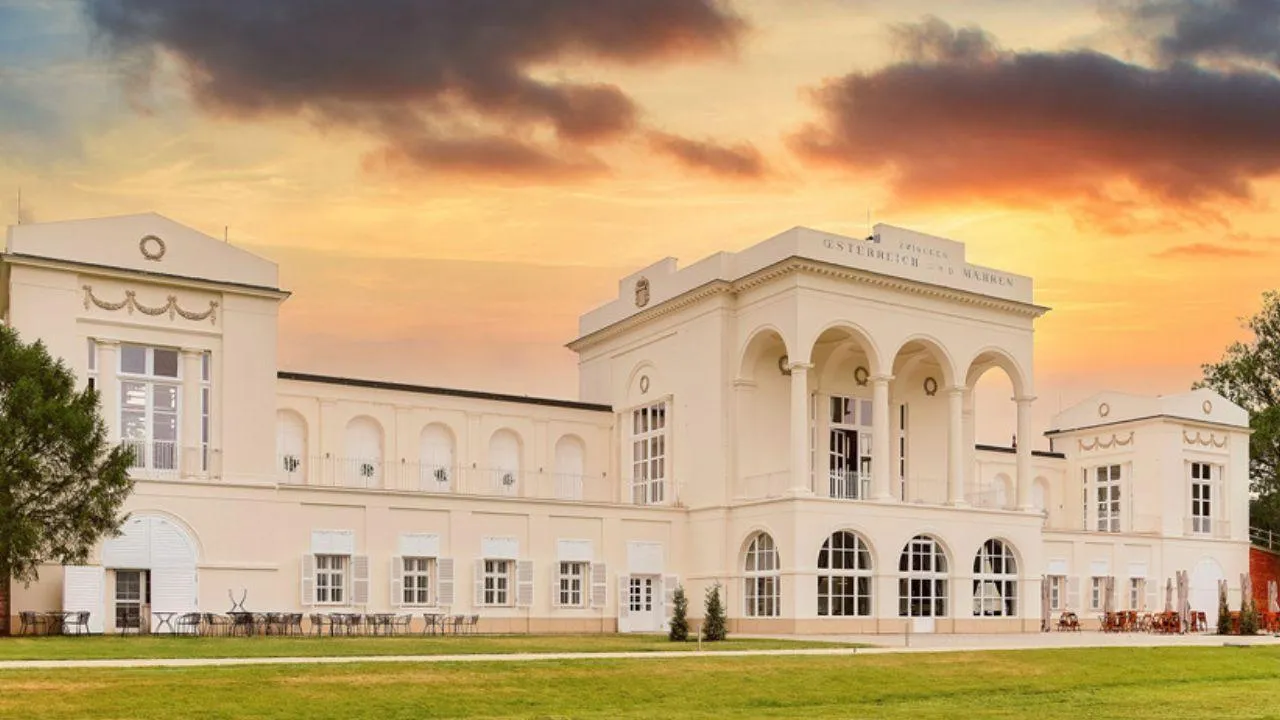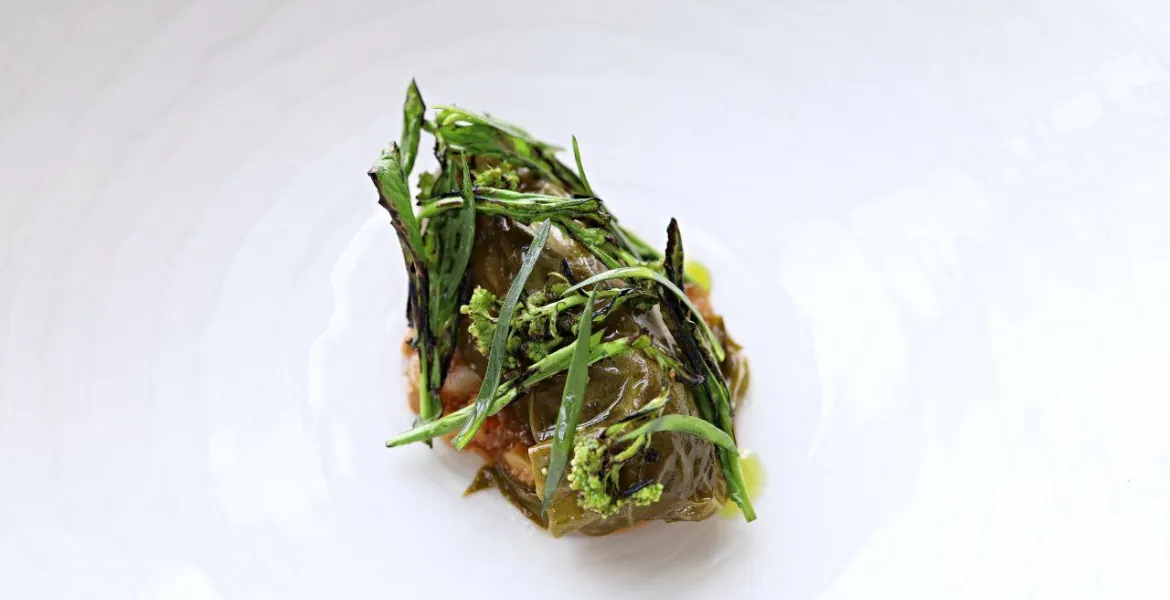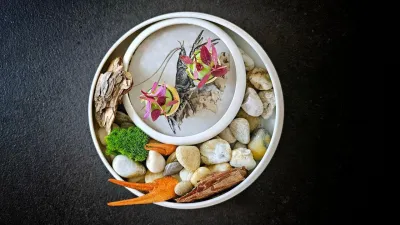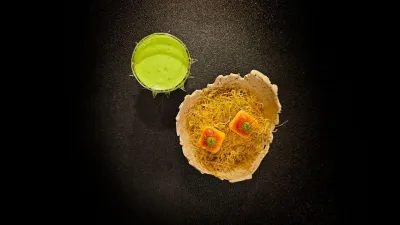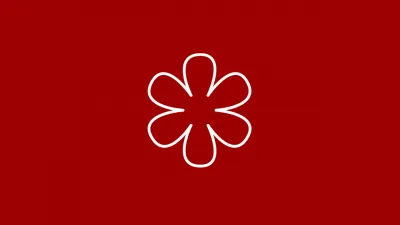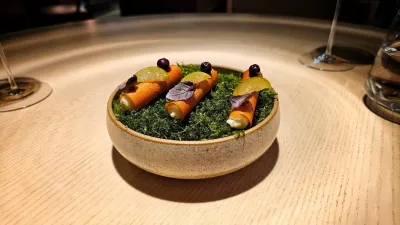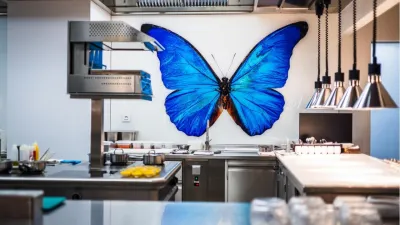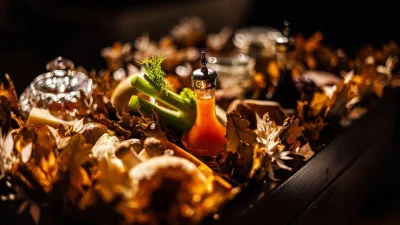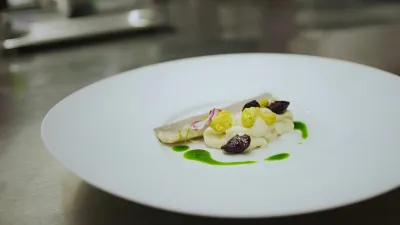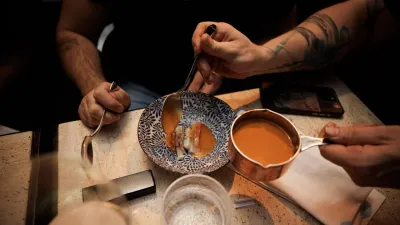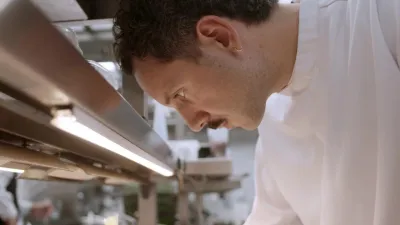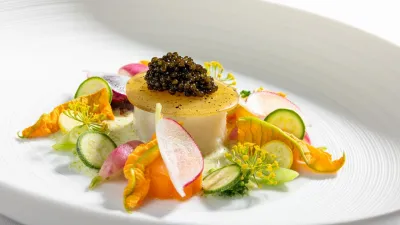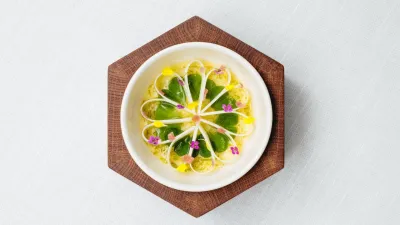Gastronomy in Moravia definitely extends beyond just Brno. Chef Otta Vašák and his team at Restaurant Essens exemplify this to the fullest extent.
This has indeed been a great success. Less than an hour's drive from Brno, in Hlohovec near Breclav, Otta Vašák's team of chefs is pioneering a culinary direction that is likely unparalleled in Moravia. Restaurant Essens, located in the Border Chateau of the Lednice-Valtice area, offers experiential gastronomy at a high level in all respects.
Cyclists, take note
Cyclists are neither recommended nor allowed. Although Otta himself is an avid cyclist and thus might be sympathetic to passers-by, Essens is a supremely elegant establishment where you can't sit at a table in elasticated shorts. The Border Manor is a well-renovated property, put together by a truly enlightened investor. It houses, among other things, a top Czech restaurant, and it deserves to be dressed accordingly. This is already clear to us when we go to Essens, and even more so when Otta Vašák personally guides us through the gardens of the chateau. Herbs and fruits grown there are then processed into dishes by the chefs. We were soon convinced that these dishes are delicious at the tasting menu. This is only offered in a six-course version at the local restaurant; there is no à la carte or any other versions of the tasting menu, which makes 100% sense at this location and with this concept. Thus, the chefs are as prepared as possible for each guest and the menu is logically appropriate.
But we're getting ahead of ourselves, because before the dishes, the wine selection is definitely worth mentioning, which someone has "beautifully played" with. Skipping the classics, for example, with bubbles like Bollinger, Veuve Clicquot, or Dom Pérignon, which is in a way a must at this type of restaurant, you will find Champagne Adrien Renoir or Champagne André Jacquart. With the still wines, the joy is immense when Châteauneuf-du-Pape or a bottle from the Château Montrose winery winks at you from the fridge. Italy, Austria, and Germany are also well represented; however, Essens does not forget about local winemakers (Stávek, Charvát, Ševčík) and Slovakia (Marvla Tindo).
Before we get to the courses listed on the tasting menu, the first amuse-bouche arrives on the table in the form of pieces of toasted toast with carp spread and tomato water chips. A very nice start, followed straight away in the "hedgehog from Serax" by fried snail, herb butter, and ham mousse. Both amuse-bouches are very tasty, in a simple yet stylish service. At the end of the greetings from the kitchen, the chefs send a focaccia to the table, and the server tells us straight away to forget the butter knives and simply dip the pieces of pastry into the delicious whipped cream with poppy seed oil. And she's right, this amuse-bouche is delectable too. A lovely start to a tasting dinner.
Only good wines and pressed juices
The first course moves to the local chateau garden, or rather the fruits of the garden to our plate. In this case, it's radishes accompanied by fish cream, which is topped with a poached egg yolk; underneath, we find fig oil with lime and mint, and in between these components is sturgeon caviar from Klečka Caviár's sturgeon ponds. The flagship of the Dobrá vinice winery, their 2016 Sauvignon Blanc, pairs very well with the dish, as does the non-alcoholic pairing. This is only the pure juice of the celeriac. "The philosophy of non-alcoholic pairings goes hand in hand with the cuisine, so we try to showcase the simple rawness of the ingredients; we don't come up with any mixed drinks or cocktails, we only serve the juices," explains the table service. The radish works well in the dish, making it look fresh and crisp.
The second official course of the tasting is a combination of white and green asparagus, accompanied by a fermented asparagus sauce with wheat, all topped with aged cow's cheese on the plate. The wheat is nicely soaked up by the sauce, giving the dish a certain suppleness and soft consistency. For the non-alcoholic pairing, we move from the world of vegetables to the world of fruit, and the server serves pure pear cider. Into the wine glass, we receive a greeting from one of the most authoritative winemakers in South Moravia, namely Rosé Bočky 2021 from Jan Stávek. The pairing fits again, as with the next dish, which is beef tartare with horseradish mayonnaise. We find fermented cherry leaves, candied ginger, lemon jelly, and fried rice on top. The dish evokes primarily Asian cuisine in its flavor, which will please many. The wine, La Croix des Batailles from natural winemaker Jean-François Ganevat, is light, without harsh tannins, with a subtle pearliness, and fits similarly to the more sophisticated non-alcoholic Vincentka water pairing this time, which the kitchen paired with Utopia vinegar with a bit of chokecherry and horseradish.
How to make bread dough
The main course of Rye Bread Pasta with a sauce also made from rye bread, drizzled with lemon zest, could be considered the highlight of the evening. There is also chive oil under the pasta. The taste is incredibly pleasant, harmonious; the pasta is perfect, and the sauce matches it to the maximum... This dish brings back to childhood, friends!
"The unused bread is cut into cubes and dried in the oven, then the dry bread is ground into powder and sifted through a fine colander into flour, which is then made into pasta," explains Otta Vašák. So simple and so ingenious! The non-alcohol here is represented by kombucha made from black and green tea. An interesting moment occurs with the wine, when the sommelier is not afraid to go back from the previous red wine to white wine and chooses a Chardonnay vertical from the legend of natural winemaking Jaroslav Osička. This is one of those wines that is suited to working with oak barrels and will reward you with its fullness, but still doesn't forget to offer a nice acidity. It makes a good contrast to the pasta.
Grilled catfish together with wild broccoli, tarragon leaves, fish sauce with amaranth, and Jerusalem artichoke looks very modern again. The plating is light and simple throughout, while always paying attention to detail. This whole course is drizzled with tarragon oil, and the non-alcoholic combination of peach juice with a thicker viscosity gives the dish a proper fullness. With the wine, we come across a name unknown to us, Péter Vida, whose Kadarka bonsai 2017, finished from old bushes, impresses with its more pronounced tannin and spiciness. Afterwards, the kitchen shines with a great cow's aged cheese accompanied by a pear chutney.
The last official course of the tasting, and therefore dessert, is a white chocolate cream with rhubarb sorbet, a crumble with cheese, chocolate, and raspberry dust, complemented by juice from melon grown in Lednice, according to the staff. The dessert sweet wine is Moscato la Serra, from the Marchesi di Grésy winery in the village of Barbaresco, surprises with its light effervescence and is delicious! Indeed, like the whole tasting dinner. We finish our meal, stand up, look around the interior of the historic building and absorb with all our senses the ambience, the lingering flavours, the atmosphere of a unique place.
In the end, we sit with chef Otta Vašák on the terrace of Hraniční Chateau over petit fours, and Otta recalls, among other things, his experience at the Michelin La Degustation Bohême Bourgeoise, which he has also talked about in the past in an interview for VisitChef magazine. His experience is obvious, but what is also clear to us is his talent and his diligence, focus, and teamwork, without which he would not have reached the level he has shown today. We believe in a future where a star will shine by the Restaurant Essens logo. There is a lot of work behind this name, Otta Vašák's cuisine is creative, fresh, and bold. And as he himself reminded us - what he cooks this week may not be repeated next week.
A job well done. We applaud!
